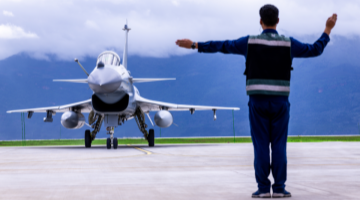By Xiang Haoyu
On March 20 local time, the United Nations Security Council (UNSC) held an interim meeting on the recent situation on the Korean Peninsula. In response to the escalation of tensions on the Korean Peninsula, the Chinese representative pointed out at the meeting that it was the US and other countries deterrent pressure that has led to the intensification of conflicts, and criticized the US side for adopting double standards on non-proliferation issues.
On the issue of the Korean Peninsula, China's position has been consistent for a long time, which can be summed up in one sentence: China has been committed to resolving the nuclear issue on the Korean Peninsula through dialogue and consultation, achieving the denuclearization of and establishing a permanent peace mechanism on the Korean Peninsula.
The ROK-US joint military exercise codenamed Ssangyong (which means “double dragons” in Korean) has been restarted after 5 years since the last time, aiming to strengthen the integrated operational capability of the ROK-US alliance, with the main subject of large-scale joint landing operation drill. Xiang Haoyu, a specially appointed research fellow at the Department for Asia-Pacific Studies at the China Institute of International Studies, pointed out that the exercise has shown three new characteristics different from the past. First, a significant expansion in scale. For the first time, the exercise has been expanded to a division level, with over 30 ships, over 70 military aircraft, and over 50 armored vehicles from both sides, on an unprecedented scale. Second, advanced weapons and equipment.The exercise featured B-1B strategic bombers, F-35A stealth fighters and Apache helicopters from the US and the ROK, and for the first time the MV-22 Osprey of the US Marine Corps for landing operations. Third, third-party involvement.The US B-1B bombers involved in the training on the Peninsula conducted a joint drill with four F-15 fighter jets of the Japan Air Self-Defense Force over the Sea of Japan, on the way from the US to the ROK. In addition, this exercise also invited the Royal Marines of the UK for the first time, with the aim of strengthening multilateral operational capability in coordination.
Judging from the subjects, the exercise has explicitly targeted the DPRK. First, it has paid more attention to actual combat needs and highlighted landing operational drills while specifically considering the geographical characteristics of the Korean Peninsula. Second, it has catered to the needs of unconventional warfare, with the US having deployed strategic weapons. Third, it has strengthened "block" confrontation, with the direct or indirect participation of the UK and Japan in the exercise, which also reflects the intention of the US and the ROK to use external forces to strengthen pressure on the DPRK.
Since 2023, the US has continuously conducted various types of military activities against the DPRK on the Korean Peninsula and its surrounding areas, with the level and scale of joint exercises enhanced. Xiang Haoyu believes that from a series of US-ROK military exercises, the US has been taking advantage of the changes in the situation on the Korean Peninsula and even in Northeast Asia to accelerate the forward military deployment in Northeast Asia. On the surface, the US-ROK joint military exercise is a response to a series of missile launches by the DPRK since 2022, but the US intention clearly cannot be restricted to this. Instead, it has been vigorously using the so-called "nuclear threat" of the DPRK to re-tighten the US-ROK alliance and strengthen the centripetal force of the ROK and Japan, two allies of the US.
From a broader perspective, the DPRK is not a major strategic opponent to the US, and the US foreign strategic focus is still on the containment and suppression of China and Russia. The special geographical location of the Korean Peninsula determines its position as an important strategic point, a frontier that the US is now striving to win over to suppress and contain China and Russia, and also a strategic fulcrum that the US is striving to build. In this sense, it is in the strategic interest of the US to maintain separation on the Korean Peninsula and even to create certain tensions. Therefore, the intensified military activities of the US on the Korean Peninsula and its surrounding areas are actually aimed at strengthening its military deployment in Northeast Asia under the banner of "deterring the DPRK", and creating the "Iron Triangle" alliance between the US, Japan, and the ROK. In essence, the US aims to achieve the goal of "containing China and Russia".
Editor's note: Originally published by the Wechat account of a commentary program of Hubei Television, this article is translated from Chinese into English and edited by the China Military Online. The information and opinions in this article do not necessarily reflect the views of eng.chinamil.com.cn.













